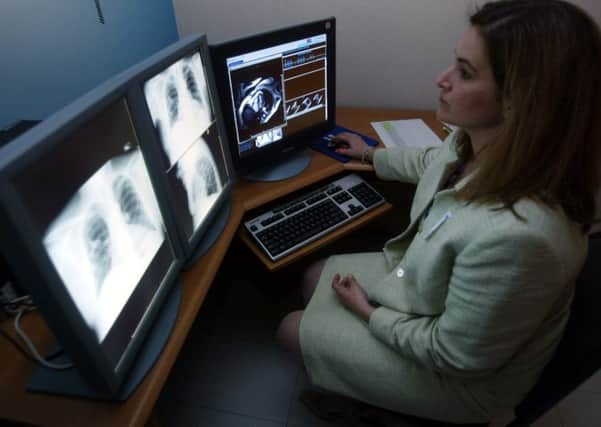Lizzy Buchan: Radiology staffing problems should not be ignored


All of these parts are vitally important and waits or problems with one area set off wide ripples. The news this week that radiology services in Scotland are struggling to keep pace with demand is of great concern.
Clinical radiologists are a vital part of the service, as are the doctors who interpret X-rays and scans to diagnose conditions such as cancer.
Advertisement
Hide AdAdvertisement
Hide AdA prompt diagnosis can make the difference to someone’s chances of survival or their quality of life.
Without this service, cancers could be found too late or worse, never diagnosed at all.
The Royal College of Radiologists (RCR) published a survey which highlighted that Scotland is lagging behind the other UK nations with a growth rate of only 3 per cent in consultant numbers over the past five years.
Many will doubtless say that an increase is, well, an increase, so it must be good news, yet it must be viewed in the context of an extraordinary 55 per cent rise in demand for medical imaging such as MRI and CT scans over the same period. Add to this a 10 per cent vacancy rate among consultants and the picture becomes even more concerning.
Scots radiologist Dr Grant Baxter suggests the situation has major implications for the Scottish Government’s cancer strategy.
Announced earlier this year, the £100 million plan sets out bold proposals to improve screening, radiotherapy and palliative care over the next five years.
Dr Baxter told me the plans should be applauded but are likely to fail without more radiologists, as the way to improve cancer outcomes is early diagnosis, and early diagnosis means imaging.
Scottish breast radiological services were once the pinnacle of excellence but now they are struggling to provide the services needed.
Advertisement
Hide AdAdvertisement
Hide AdRadiology is not the only NHS service that is struggling, as the crisis among GPs is well documented and other areas such as paediatrics have found it hard to recruit.
Dr Baxter said the system was “at breaking point” – which doctors don’t tend to do unless they really mean it.
Politicians love to use that language, as do journalists and campaigners, but doctors do not. So we really need to listen when they start asking for help.
The Scottish Government cannot continue to bury its head in the sand and pretend things are fine because Scotland does not have a junior doctors strike like in England.
Family doctors have been crying out for help for many months without attracting much support, and now we are on the brink of a full blown crisis.
Let us learn from our mistakes and heed these warnings from radiologists while there is time to fix things.
The RCR has a reasonable improvement wishlist, including a five-year plan for radiology, more doctors from overseas, and funding for increased trainee numbers.
It is surely time to heed what the clinical experts have to say.
Otherwise these staffing shortages could undermine the Scottish Government’s bold and innovative cancer strategy, which could do so much good for so many.